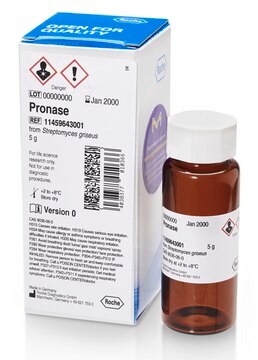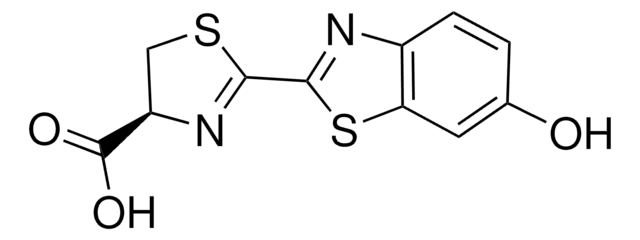SRP2030
Sp1 GC-box binding protein human
recombinant, expressed in insect cells, ≥75% (SDS-PAGE)
About This Item
Polecane produkty
pochodzenie biologiczne
human
rekombinowane
expressed in insect cells
Próba
≥75% (SDS-PAGE)
Formularz
frozen liquid
masa cząsteczkowa
~81.6 kDa
opakowanie
pkg of 5 μg
warunki przechowywania
avoid repeated freeze/thaw cycles
stężenie
200 μg/mL
metody
electrophoretic mobility shift assay: suitable
kolor
clear colorless
numer dostępu NCBI
numer dostępu UniProt
Warunki transportu
dry ice
temp. przechowywania
−70°C
informacje o genach
human ... SP1(6667)
Zastosowanie
Działania biochem./fizjol.
Postać fizyczna
Uwaga dotycząca przygotowania
Kod klasy składowania
10 - Combustible liquids
Klasa zagrożenia wodnego (WGK)
WGK 1
Temperatura zapłonu (°F)
Not applicable
Temperatura zapłonu (°C)
Not applicable
Wybierz jedną z najnowszych wersji:
Certyfikaty analizy (CoA)
Nie widzisz odpowiedniej wersji?
Jeśli potrzebujesz konkretnej wersji, możesz wyszukać konkretny certyfikat według numeru partii lub serii.
Masz już ten produkt?
Dokumenty związane z niedawno zakupionymi produktami zostały zamieszczone w Bibliotece dokumentów.
Nasz zespół naukowców ma doświadczenie we wszystkich obszarach badań, w tym w naukach przyrodniczych, materiałoznawstwie, syntezie chemicznej, chromatografii, analityce i wielu innych dziedzinach.
Skontaktuj się z zespołem ds. pomocy technicznej








